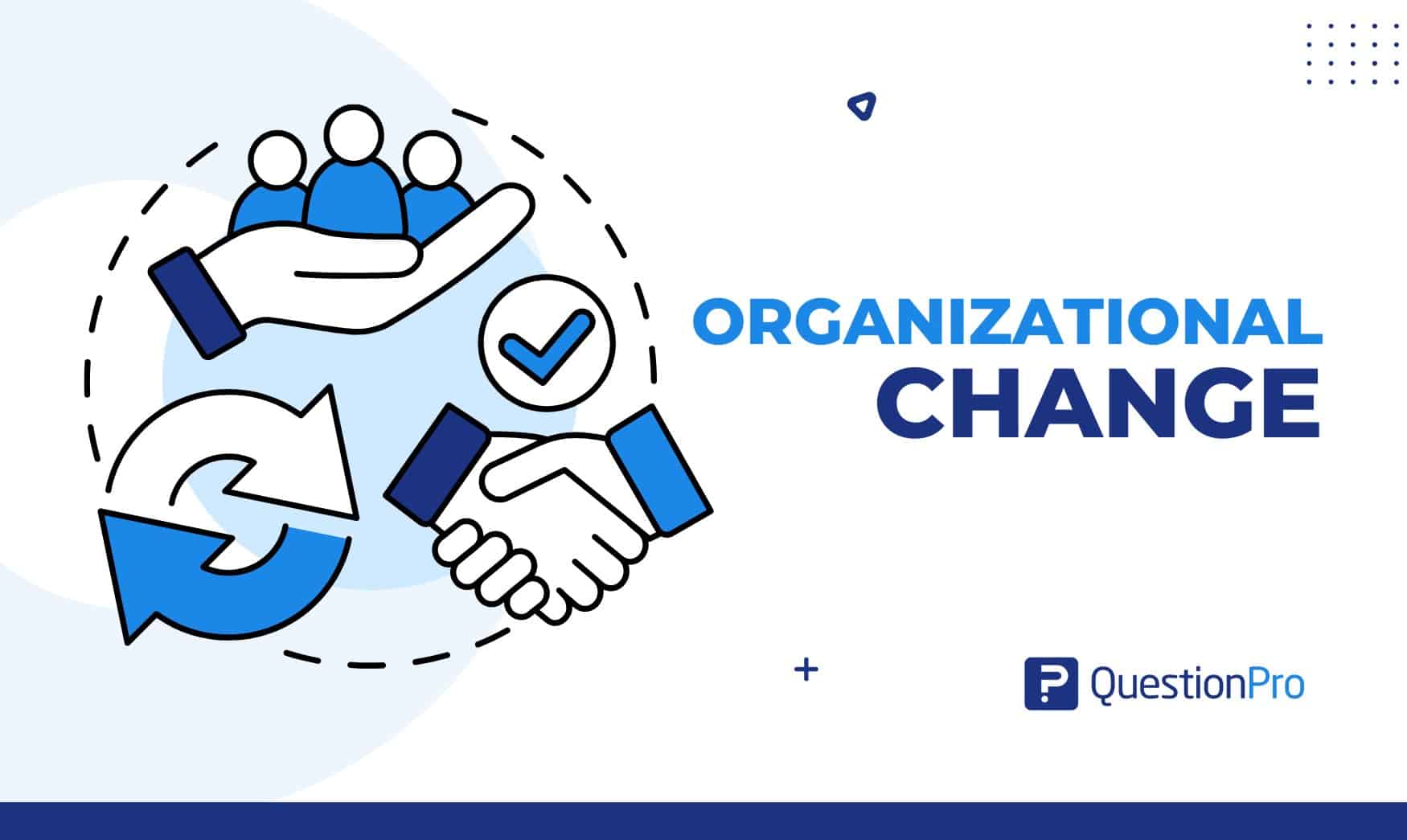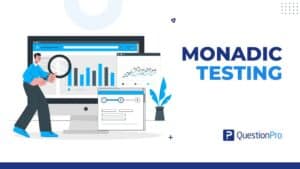
Change is the only constant in business, and the ability to manage it effectively can make the difference between thriving and merely surviving. Understanding and managing organizational change is crucial, whether your organization is introducing a new technology, expanding into new markets, or completely reimagining its strategy. But what exactly does it entail? What are its different forms, and how can you smoothly steer your organization through these transitions?
In this blog, we’ll learn the essence of organizational change, explore its various types, and provide practical strategies for managing it.
What is Organizational Change?
Organizational Change is the process by which a company or organization transforms its structure, strategy, operations, culture, or processes.
This change is driven by internal factors like growth, leadership shifts, or the need for improvement, as well as external factors such as market conditions, technological advancements, and competitive pressures.
Organizational change can take various forms, from small, incremental adjustments to large-scale, transformational shifts. The primary goal of organizational change is to enhance the organization’s effectiveness, improve performance, and adapt to evolving circumstances.
The change in organizational structure is a necessary process for growth and sustainability. It enables organizations to navigate challenges, seize opportunities, and maintain a competitive edge in their industry.
Why is Organizational Change Management Important?
Properly managing change is not just about implementing new systems or processes; it’s about ensuring these changes lead to positive, lasting outcomes. Let’s explore why organizational change management is important for your success.
Employee Engagement
Organizational change management isn’t just about sending out company-wide notifications. It’s about actively involving everyone in your organization in the change process. By engaging your employees and making them feel part of the transition, you’re more likely to gain their support and ensure successful organizational change.
Communication
Effective communication is essential for successful change management and offers several key benefits. When communication is clear and consistent among employees, leaders, and key stakeholders, the change process becomes more manageable.
Here are some of the advantages of strong communication during organizational change:
- Reduces Confusion: Clear communication helps prevent misunderstandings and misinterpretations.
- Minimizes Uncertainty: Providing regular updates eases anxiety and keeps everyone informed.
- Builds Trust: Open dialogue creates trust between all levels of the organization.
- Encourages Support: Transparent communication helps gain buy-in and support for the changes.
By prioritizing effective communication, you ensure a good organizational transition and approach to managing change.
Minimizes Resistance to Change
Change can be challenging and often meets with resistance, which can slow progress. Employees might actively refrain from participating in the change efforts, impacting project management, productivity, and morale.
However, employing an effective change management strategy can help overcome this resistance. Providing employees with the necessary information and support can alleviate their concerns, making them more likely to embrace and support the changes.
Enhances Productivity:
Properly managed organizational changes can lead to:
- Improved processes
- New systems
- More efficient workflows
This results in a more coordinated and positive work environment, which boosts employee productivity. A supportive team atmosphere also encourages greater engagement in their tasks, further enhancing productivity.
Improves Customer Satisfaction
The impact of organizational changes eventually reaches your customers, for better or worse. Positive change management contributes to a more secure and stable environment for your employees, leading to more efficient operations and higher-quality products and services. As a result, you can deliver better customer experience and reduce mistakes that could negatively affect your customers.
What are The Key Components of Organizational Change Management?
Effective organizational change management involves a structured approach to transitioning individuals, teams, and organizations from a current state to a desired future state. The goal is to ensure that changes are implemented smoothly and achieve the intended outcomes. Here are the key components of organizational change management:
- Change Vision and Strategy
- Leadership and Sponsorship
- Communication
- Employee Involvement and Engagement
- Training and Development
- Change Management Team
- Stakeholder Management
- Monitoring and Evaluation
By focusing on these key components, organizations can successfully navigate change, ensuring that the transition is smooth, employees are engaged, and the desired outcomes are achieved.
Types of Organizational Change
Organizational changes are crucial for businesses to stay competitive and effective. These changes typically fall into five main categories:
1. Transformational Change
Transformational change involves complete and significant alterations that reshape business strategies and processes. It redefined the organization entirely. These changes are usually large-scale, impacting the entire organization, and are implemented in response to drastic shifts in the market, technology, or internal conditions.
Types of Changes:
- Cultural Change: Shifting the core values, vision, and mission of the organization, leading to a transformed work environment.
- Structural Change: Reorganizing departments, creating new roles, and redefining job responsibilities to improve performance.
- Personnel Change: Mass hiring or layoffs due to significant growth or downsizing, affecting employee engagement and retention.
2. Transitional Change
Transitional change replaces existing processes with new ones to enhance efficiency and performance. These changes are often periodic and necessary for maintaining competitiveness in the marketplace.
Common Scenarios:
- Mergers and acquisitions
- Policy updates
- Corporate restructuring
Types of Changes:
- Technology Change: Implementing new technologies to replace outdated methods, such as automation or new software platforms.
- Operational Change: Updating processes or streamlining operations to improve efficiency, often involving new technologies or products.
3. Developmental Change
Developmental change focuses on improving and refining existing systems incrementally. These changes are small-scale, aimed at enhancing current processes and correcting deficiencies.
Examples:
- Updating payroll procedures
- Enhancing billing and reporting methods
- Refining marketing strategies
Types of Changes:
- Anticipatory Change: Preparing for future opportunities or challenges based on data analysis and customer feedback.
- Remedial Change: Quickly addressing unanticipated problems, such as talent loss or customer communication issues.
4. Proactive Change
Proactive changes are pre-planned and implemented to avoid future threats or capitalize on potential opportunities. These changes are strategically planned to address underlying issues and improve the overall system.
Examples:
- Increasing production in anticipation of rising demand.
- Introducing employee benefit schemes to boost retention.
5. Reactive Change
Reactive changes are unplanned and executed in response to unforeseen internal or external factors. These changes are often necessary to address immediate threats or opportunities that have already occurred.
Reactive changes are usually chaotic and costly. It requires immediate action to mitigate the impact of unexpected events. They often focus on addressing specific symptoms rather than underlying issues.
How to Manage Organizational Change?
Managing organizational change effectively is critical for business processes to thrive in today’s dynamic environment. Change can be daunting, but with the right strategies, it can lead to innovation, growth, and improved efficiency. Here’s we will explore how to manage organizational change successfully.
1. Understand the Change
Start by clearly defining the change and understanding its scope. Identify what needs to change, why it is necessary, and how it will impact the organization.
Steps:
- Conduct a thorough analysis of the current situation.
- Determine the objectives and desired outcomes of the change.
- Identify the stakeholders affected by the change.
2. Develop a Clear Vision and Strategy
Articulate a clear vision that outlines the end goal of the change. This vision should be compelling and align with the organization’s overall mission and values. Develop a strategic plan that includes detailed steps on how to achieve the vision. This plan should cover timelines, resources needed, and key performance indicators (KPIs) to measure progress.
Steps:
- Create a detailed action plan with specific milestones.
- Allocate necessary resources and assign responsibilities.
- Set up a timeline for implementation.
3. Communicate Effectively
Effective communication is crucial for managing organizational change. Ensure that all stakeholders are informed about the change, its benefits, and the steps involved. Engage employees at all levels to gain their support and reduce resistance. Provide platforms for feedback and address concerns promptly.
Steps:
- Hold regular meetings and updates.
- Use multiple communication channels (emails, meetings, intranet).
- Encourage open dialogue and feedback.
4. Build a Change Management Team
Assemble a dedicated change management team comprising leaders from various departments. This team should be responsible for driving the change and ensuring alignment across the organization. Clearly define the roles and responsibilities of each team member to avoid confusion and overlap.
Steps:
- Select team members with the necessary skills and influence.
- Define clear roles and responsibilities.
- Ensure regular communication within the team.
5. Provide Training and Support
Develop training programs to equip employees with the skills and knowledge required for the change. This can include technical training, soft skills development, and leadership training. Establish support systems such as helpdesks, online resources, and mentoring programs to assist employees during the transition.
Steps:
- Conduct a needs assessment to identify training requirements.
- Develop and deliver training programs.
- Provide ongoing support and resources.
6. Monitor and Measure Progress
KSet key performance indicators (KPIs) to measure the effectiveness of the change. Regularly track progress against these indicators and make adjustments as necessary. Implement feedback loops to gather input from employees and stakeholders. Use this feedback to make continuous improvements.
Steps:
- Establish clear KPIs and metrics.
- Regularly review progress and make adjustments.
- Collect and act on feedback.
7. Celebrate Successes and Learn from Failures
Recognize and celebrate milestones and successes to maintain morale and motivation. This helps reinforce the positive aspects of the change and encourages continued effort. Analyze failures and setbacks to understand what went wrong and how to improve. Use these lessons to refine your approach and avoid similar issues in the future.
Steps:
- Publicly acknowledge achievements and contributions.
- Hold debrief sessions to discuss lessons learned.
- Apply insights to future change initiatives.
How QuestionPro Helps in Managing Organizational Change?
Managing organizational change can be challenging, but QuestionPro Workforce offers powerful tools to help organizations navigate these transitions effectively. By focusing on employee feedback, engagement, and data-driven insights, QuestionPro Workforce ensures that changes are implemented smoothly and successfully. Here’s how it works:
Employee Feedback Collection
It allows organizations to gather real-time feedback from employees, which is crucial during change initiatives. This feedback helps in understanding employee concerns and expectations, allowing for timely adjustments to change human resource management strategies.
Surveys and Polls
The platform enables the creation of customized surveys and polls to understand:
- Employee sentiment
- Engagement and
- Readiness for change
This data helps tailor communication and support strategies to manage the change process better.
Analytics and Reporting
QuestionPro provides advanced analytics and reporting tools to analyze feedback data. This helps in identifying:
- Trends
- Potential issues
- Areas that need attention
It allows for data-driven decision-making in managing change.
Change Readiness Assessment
The tool can be used to assess the organization’s readiness for change by evaluating employee attitudes and perceptions. This helps in planning and implementing change initiatives more effectively.
Engagement Tracking
By monitoring employee engagement levels, organizations can assess the impact of change initiatives and make necessary adjustments to improve engagement and reduce resistance.
Actionable Insights
The insights gathered from surveys and feedback can be used to develop targeted action plans to address specific concerns and improve the overall change management process.
Conclusion
Organizational change is vital to maintaining and improving business performance. Organizations can navigate transitions smoothly and achieve their goals by understanding the different types of organizational change and implementing effective management strategies. Clear communication, employee engagement, and ongoing support are key to managing change successfully and ensuring long-term success.
QuestionPro Workforce is a powerful tool for managing organizational change. It helps organizations navigate the complexities of change with greater confidence and success. Whether assessing change readiness, monitoring impact, or enhancing communication,
QuestionPro Workforce equips organizations with the insights and tools to manage change effectively and sustainably. So, Get ready to turn uncertainty into opportunity and lead your organization toward a successful future with QuestionPro.







